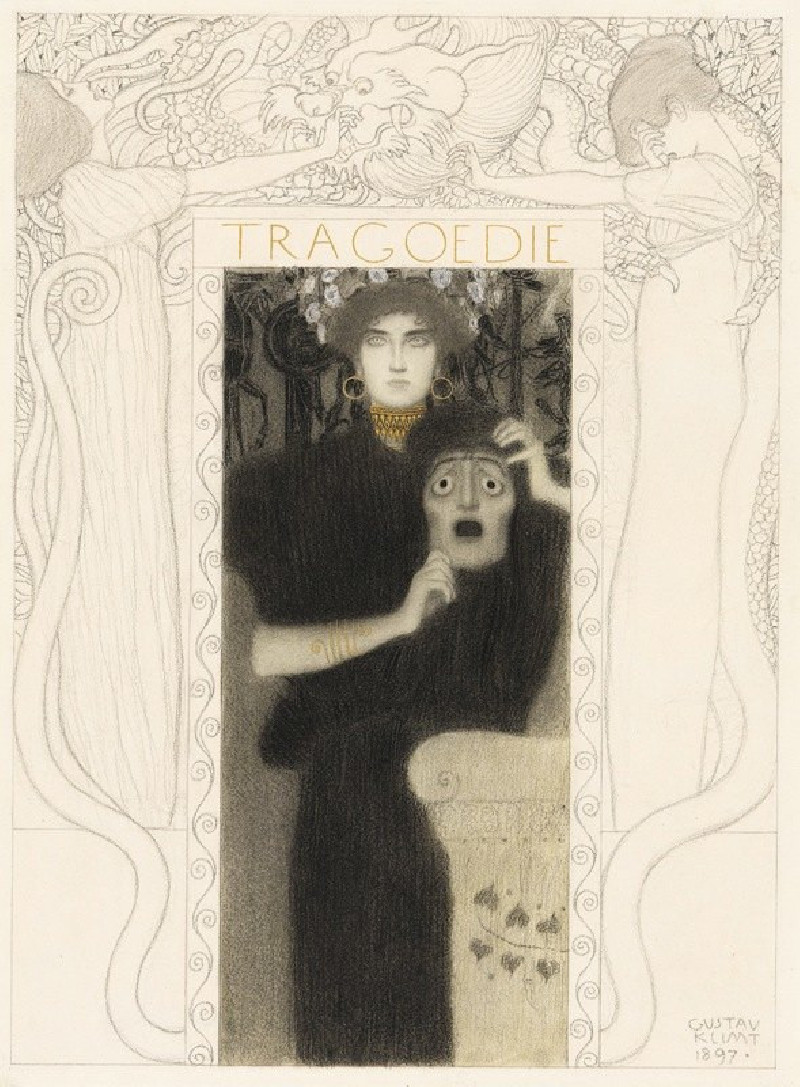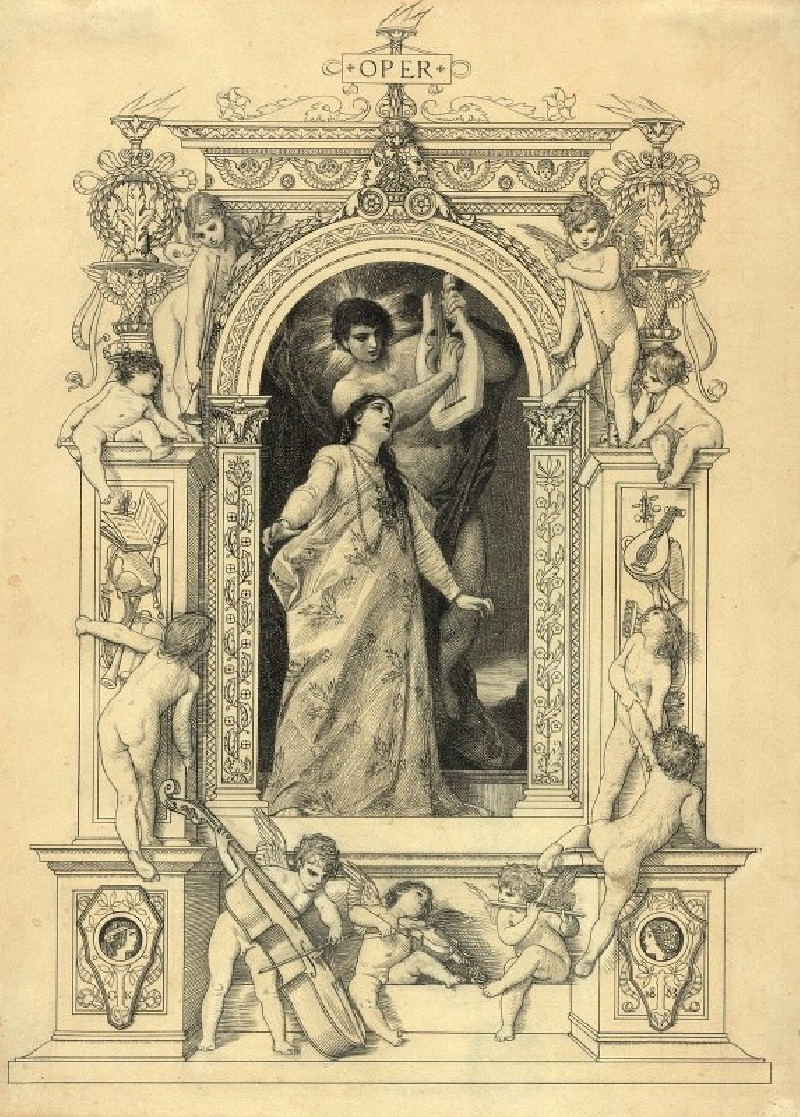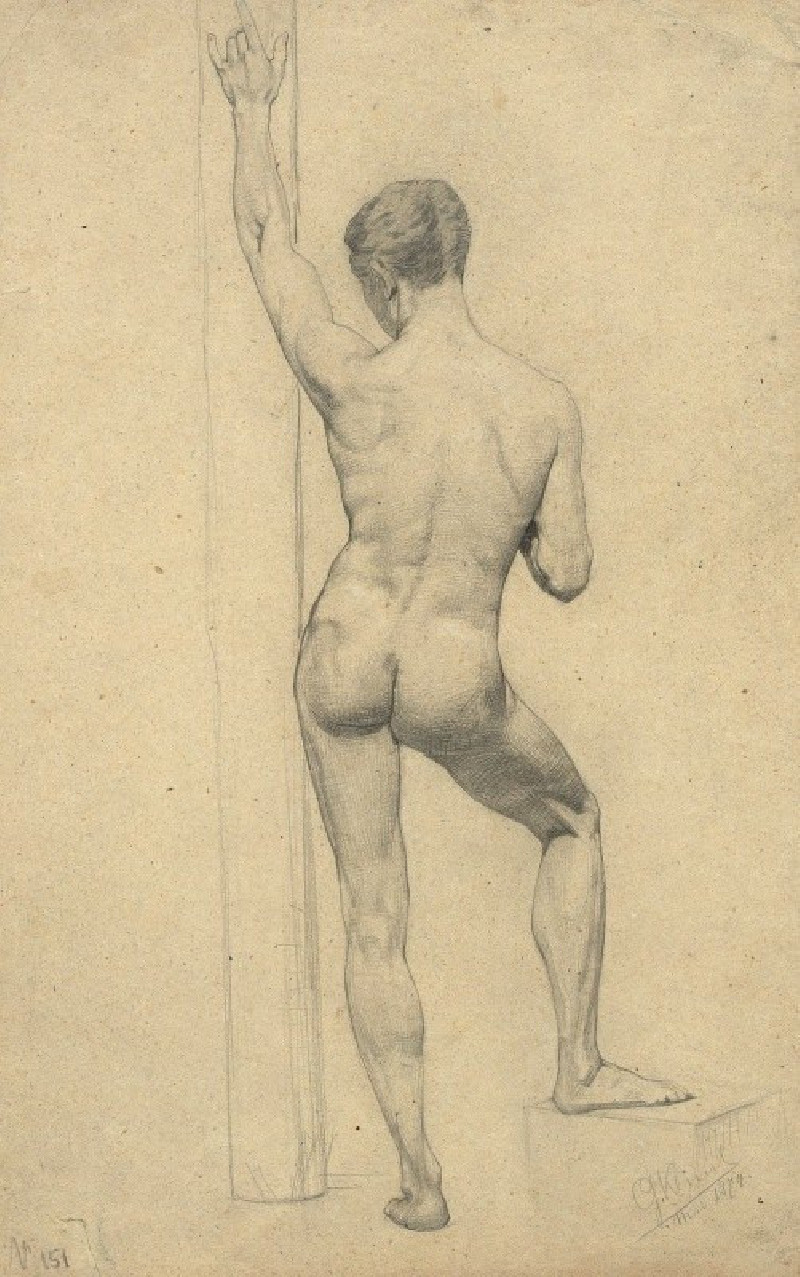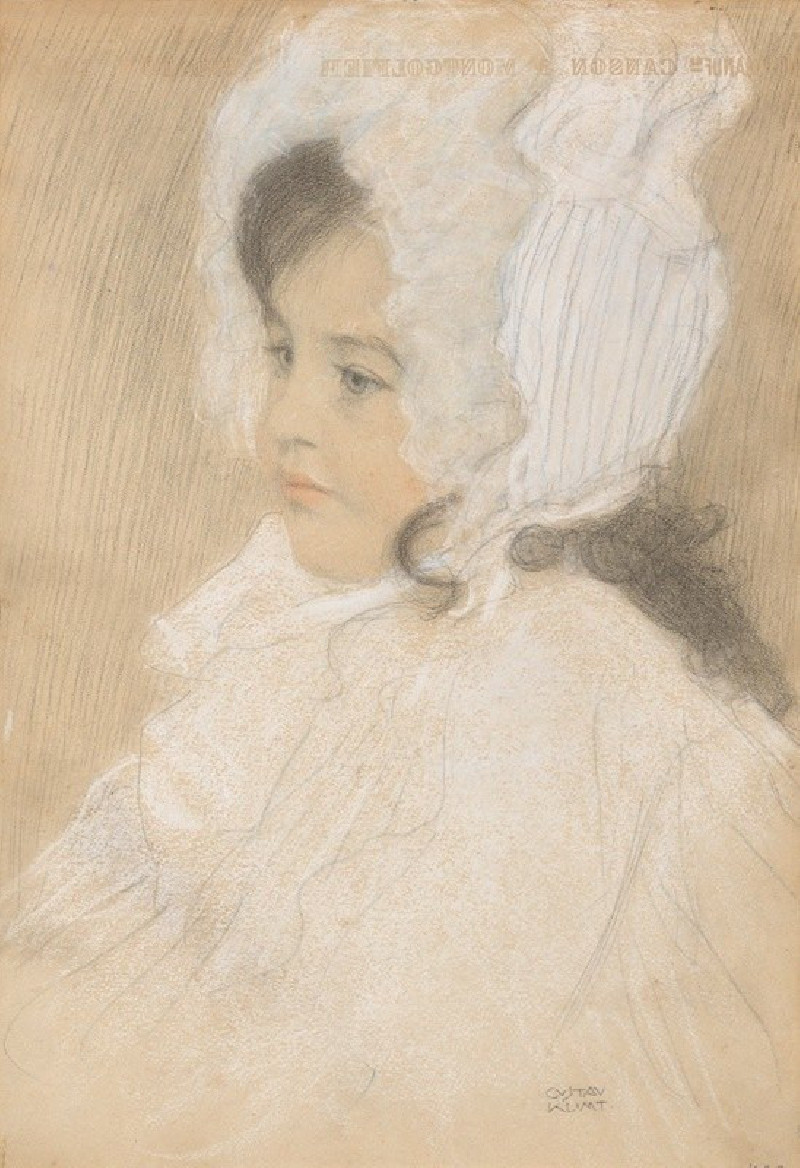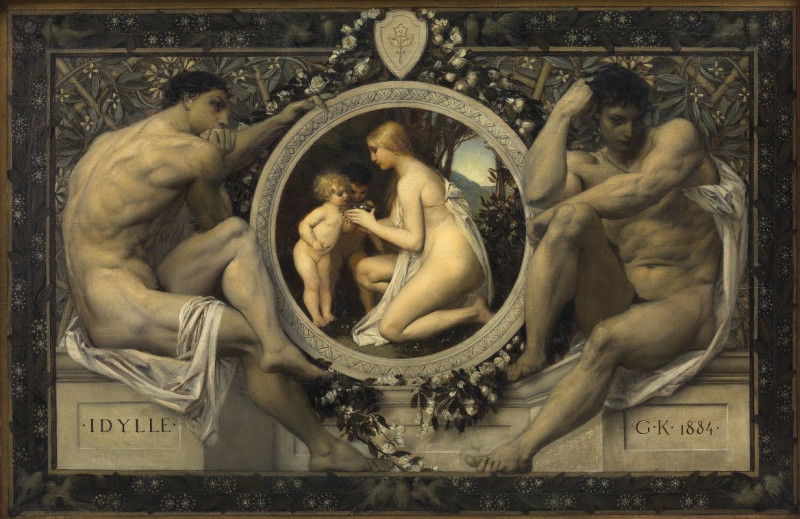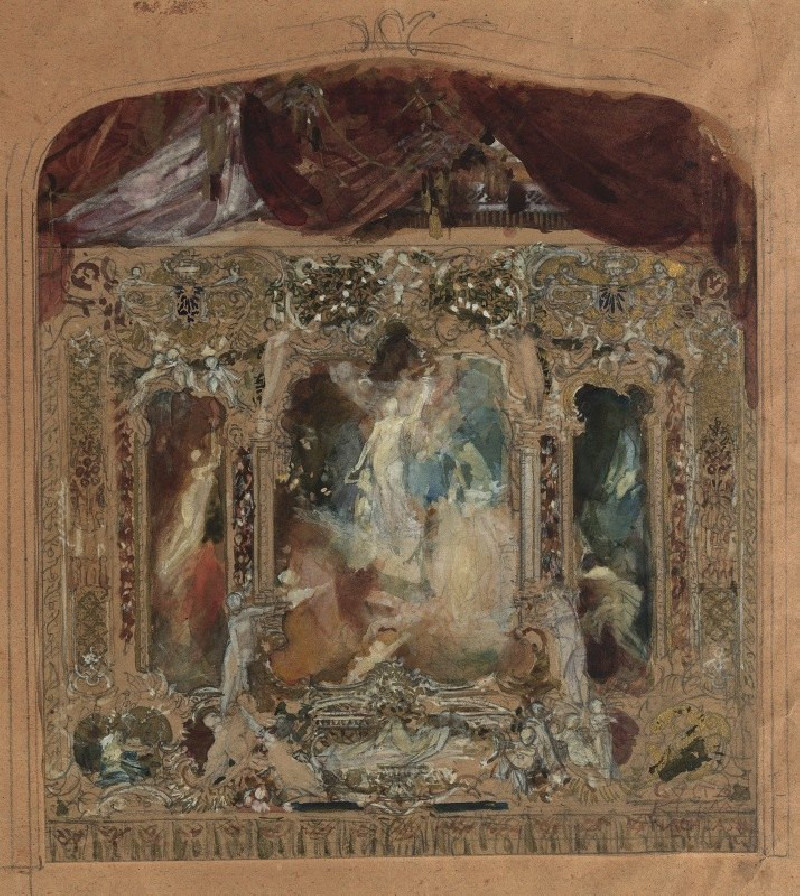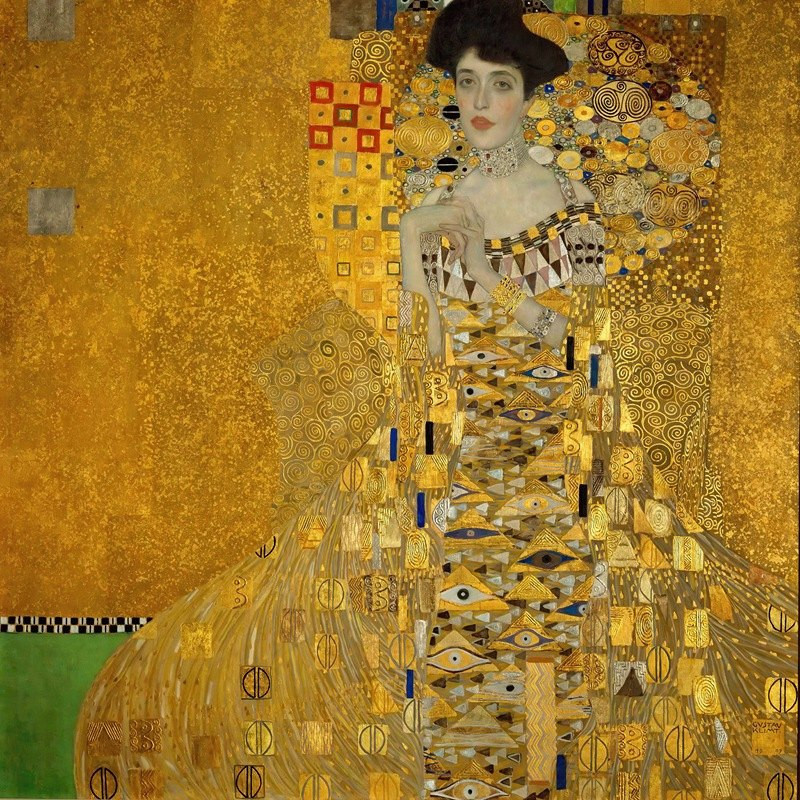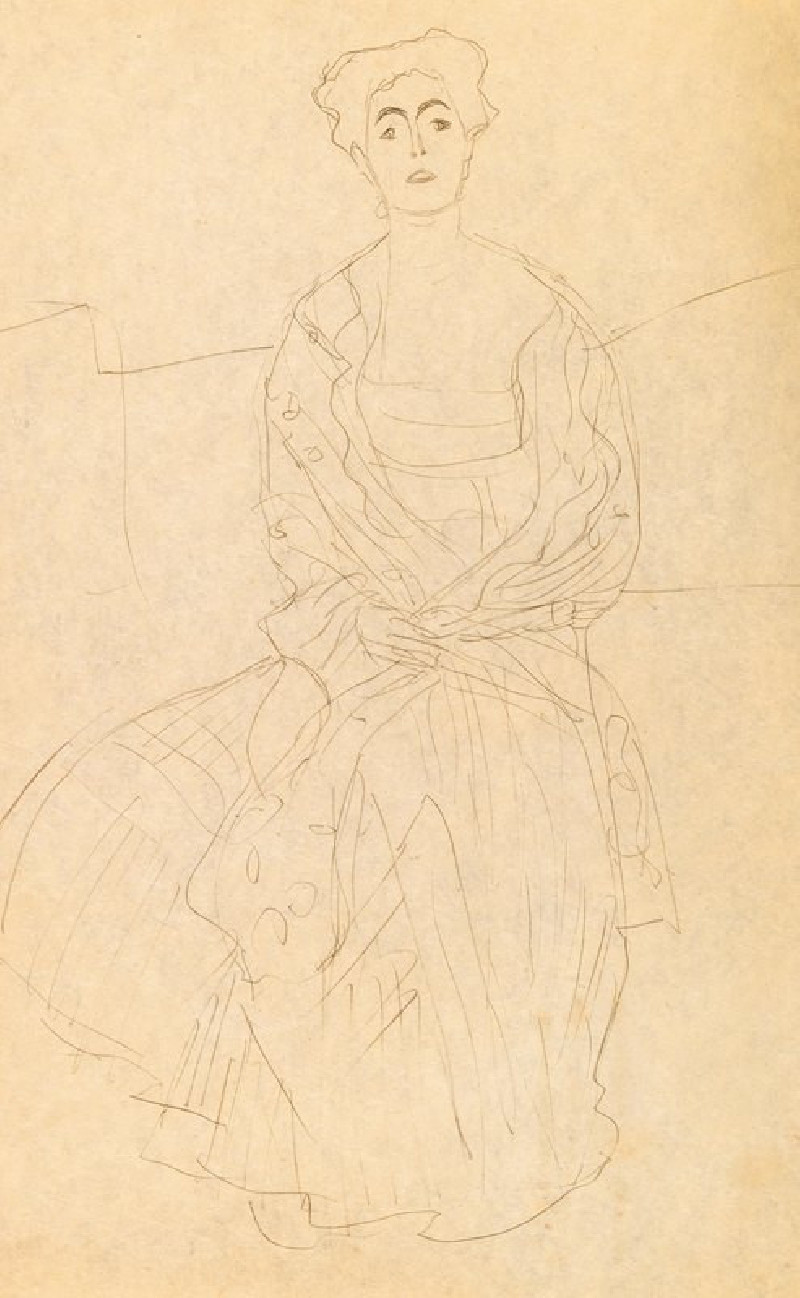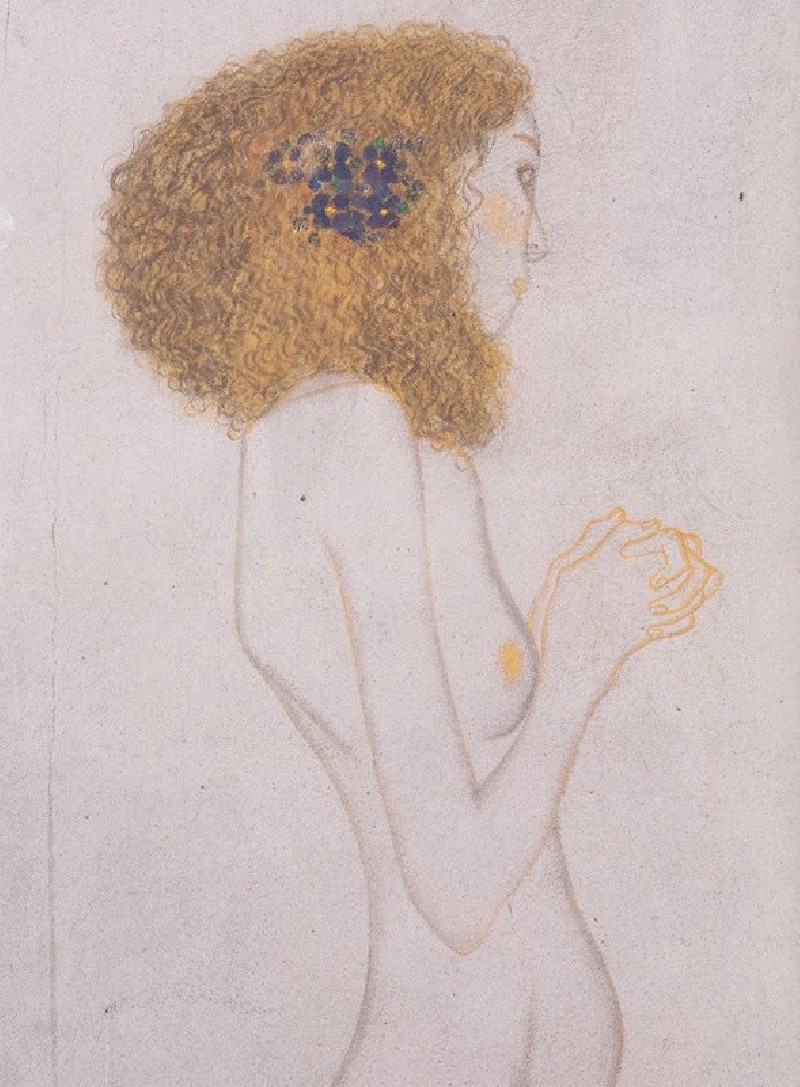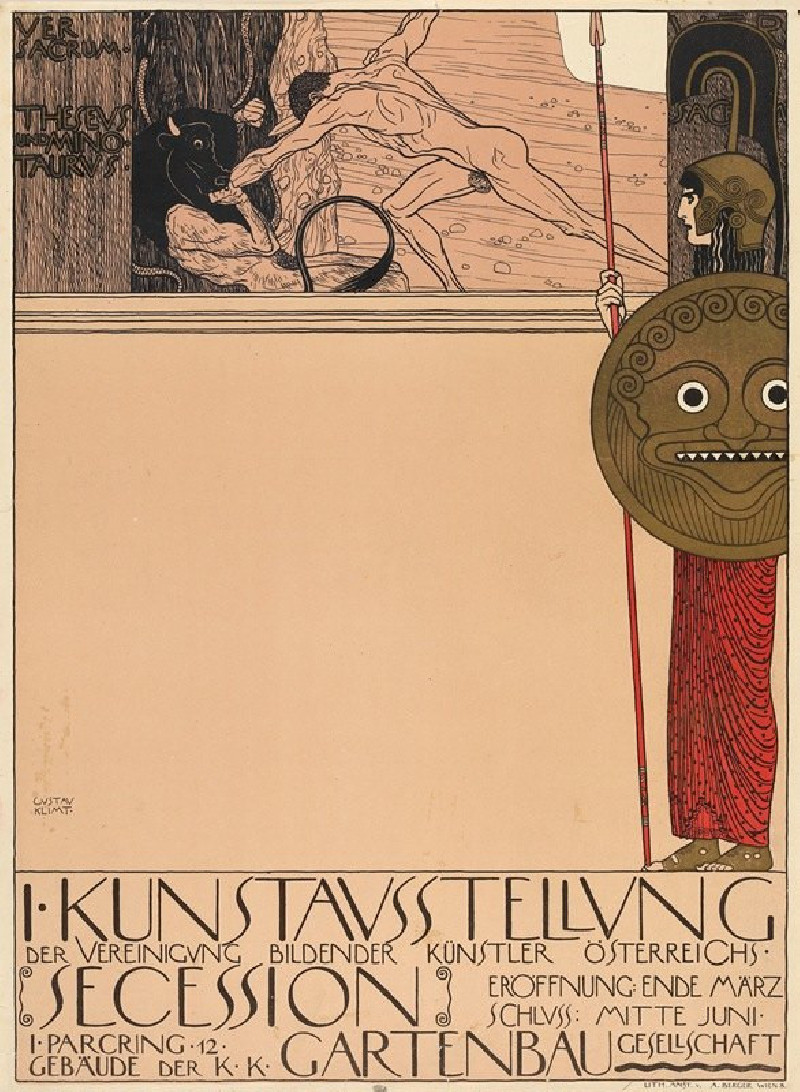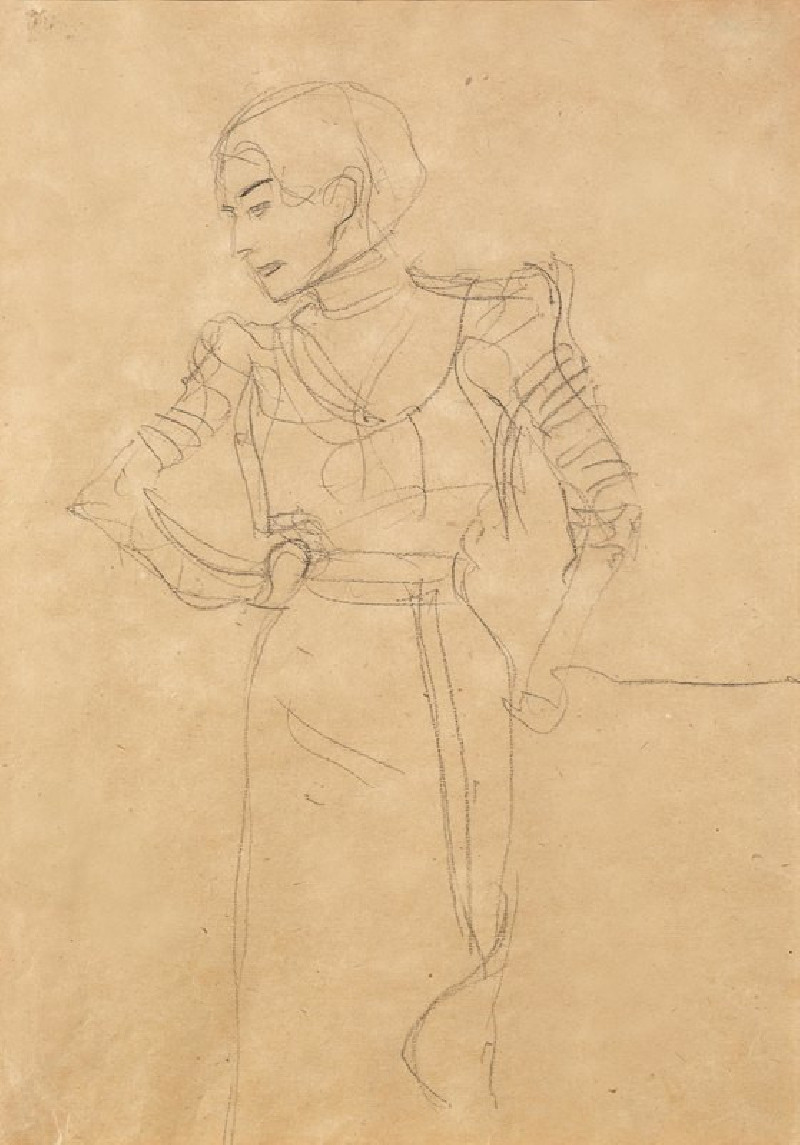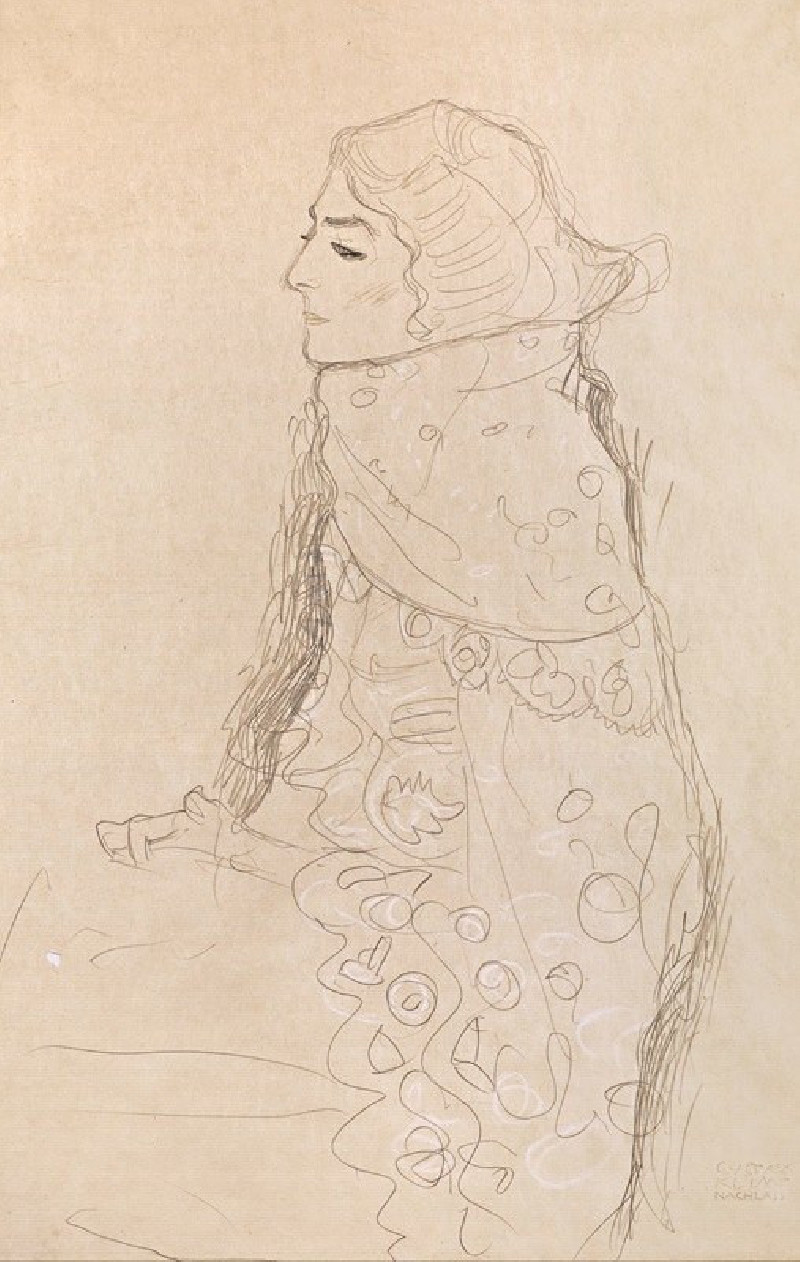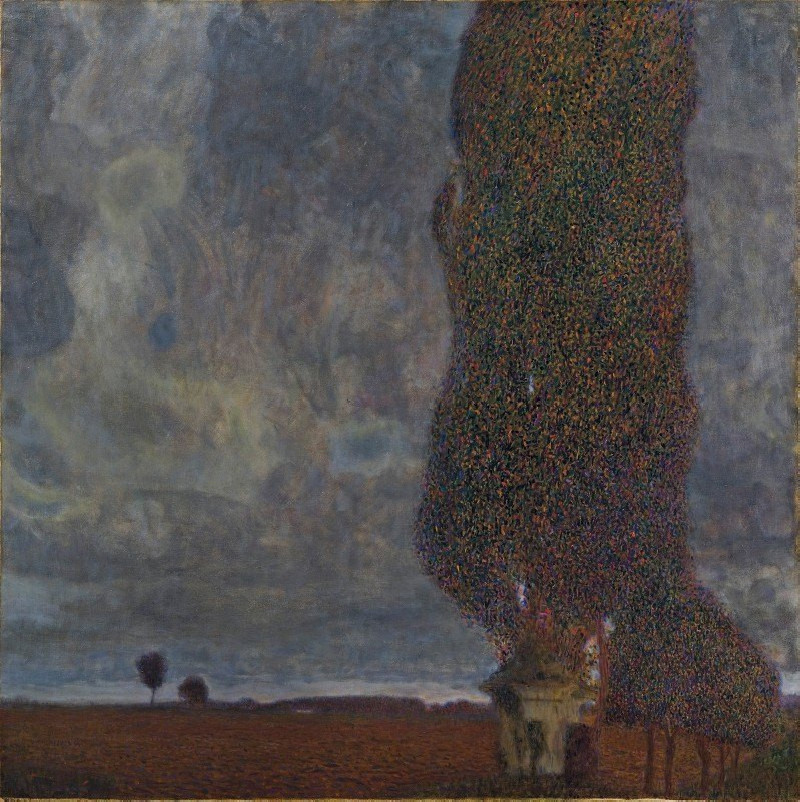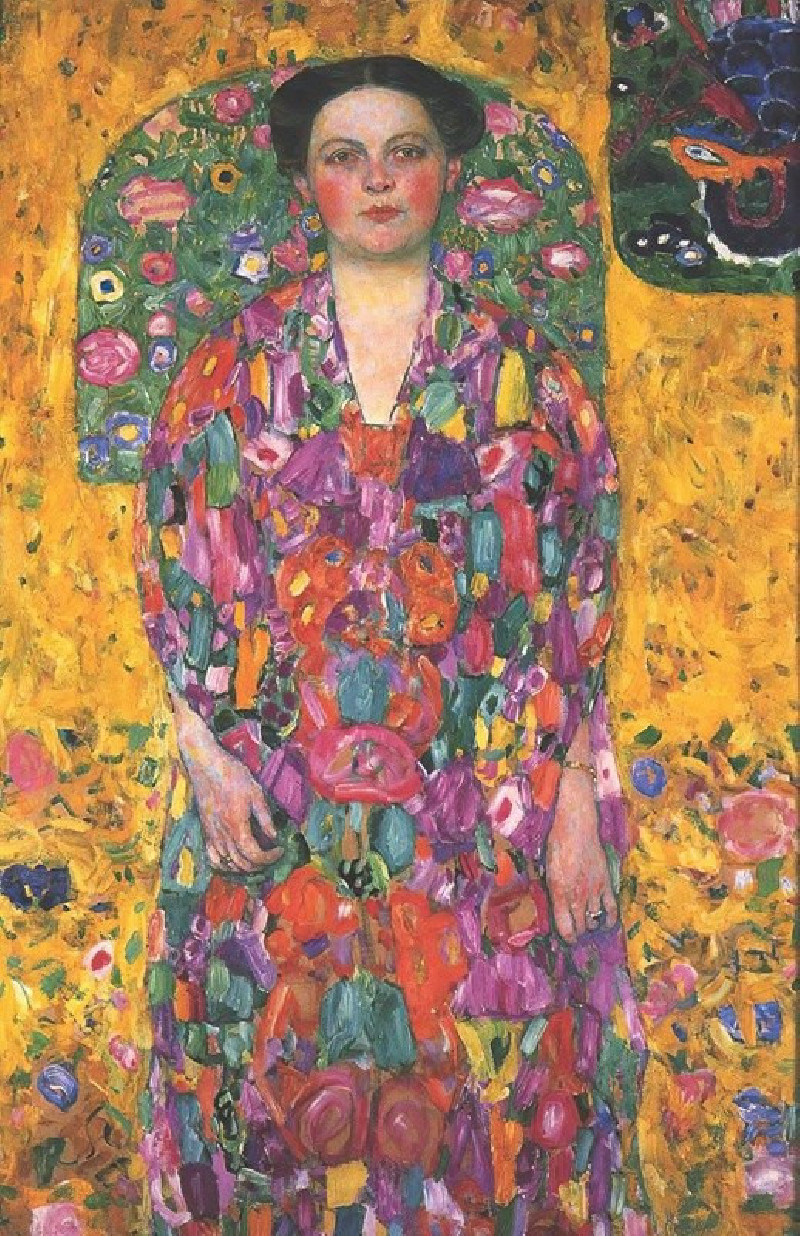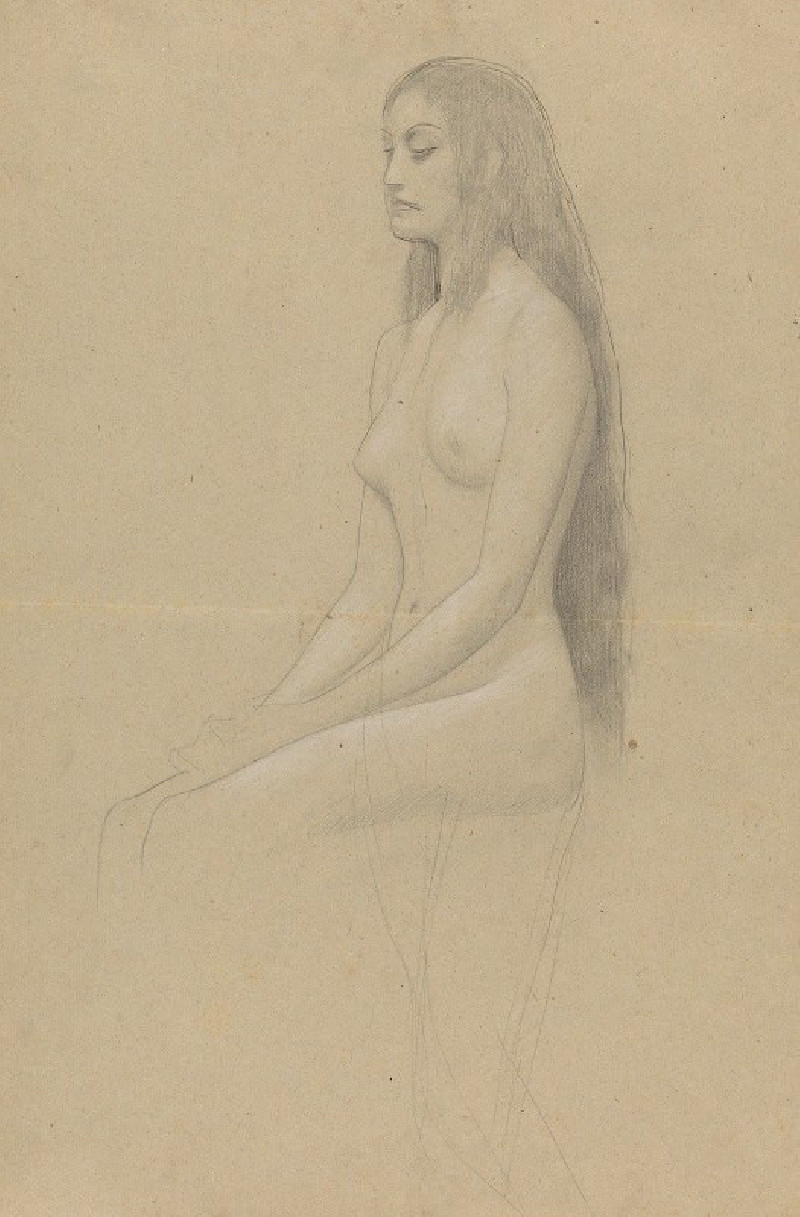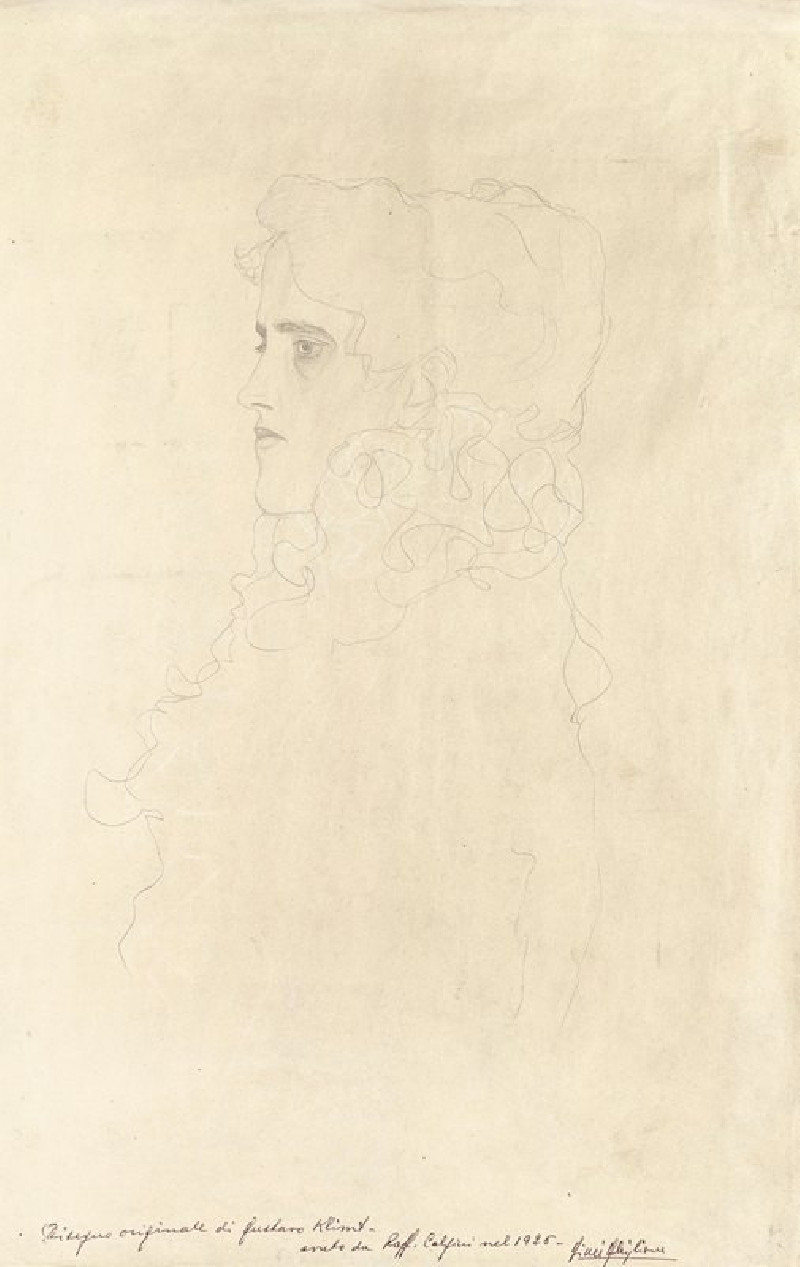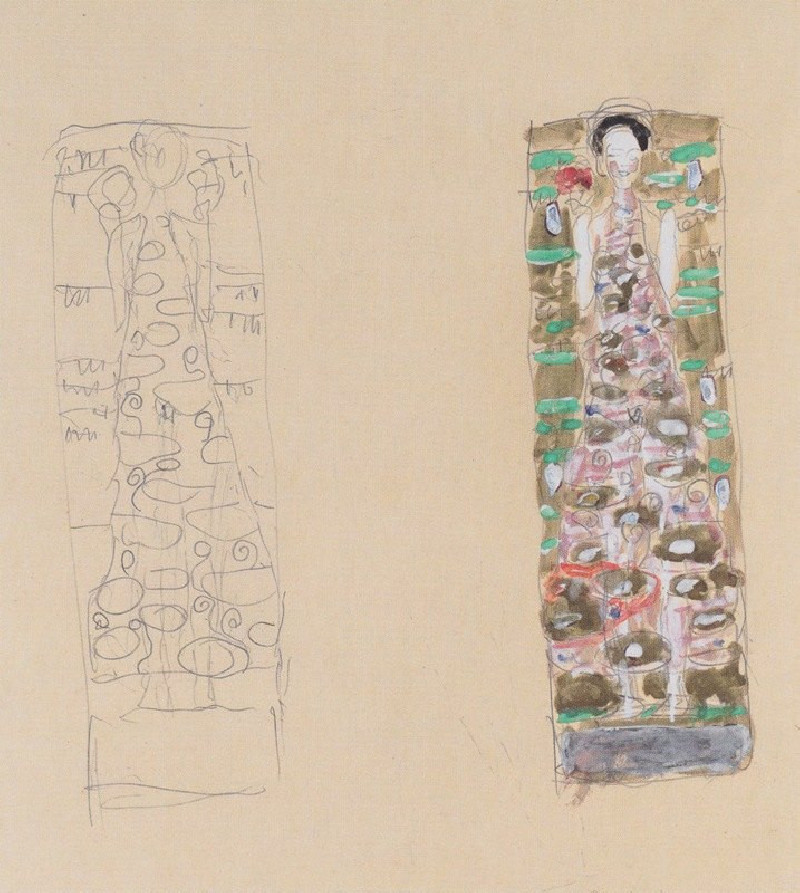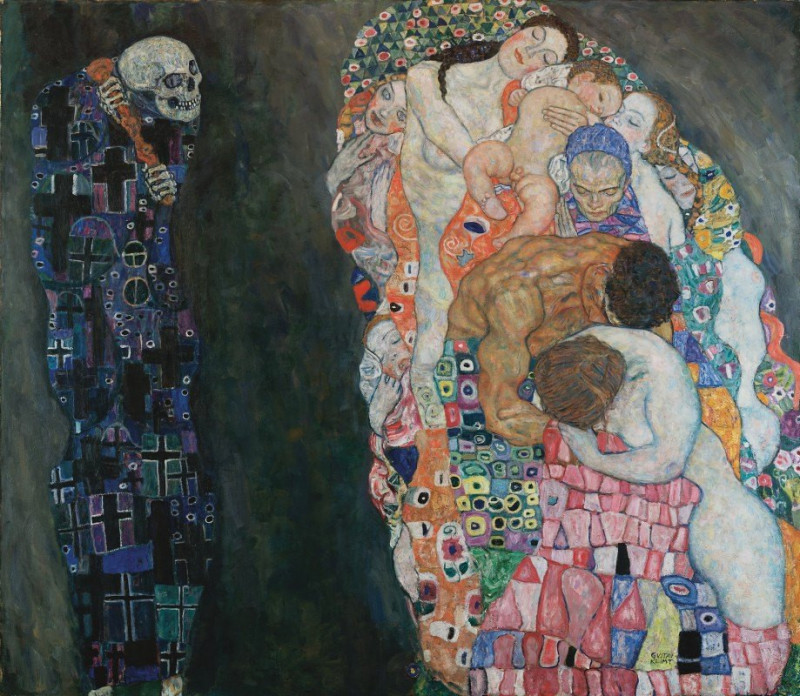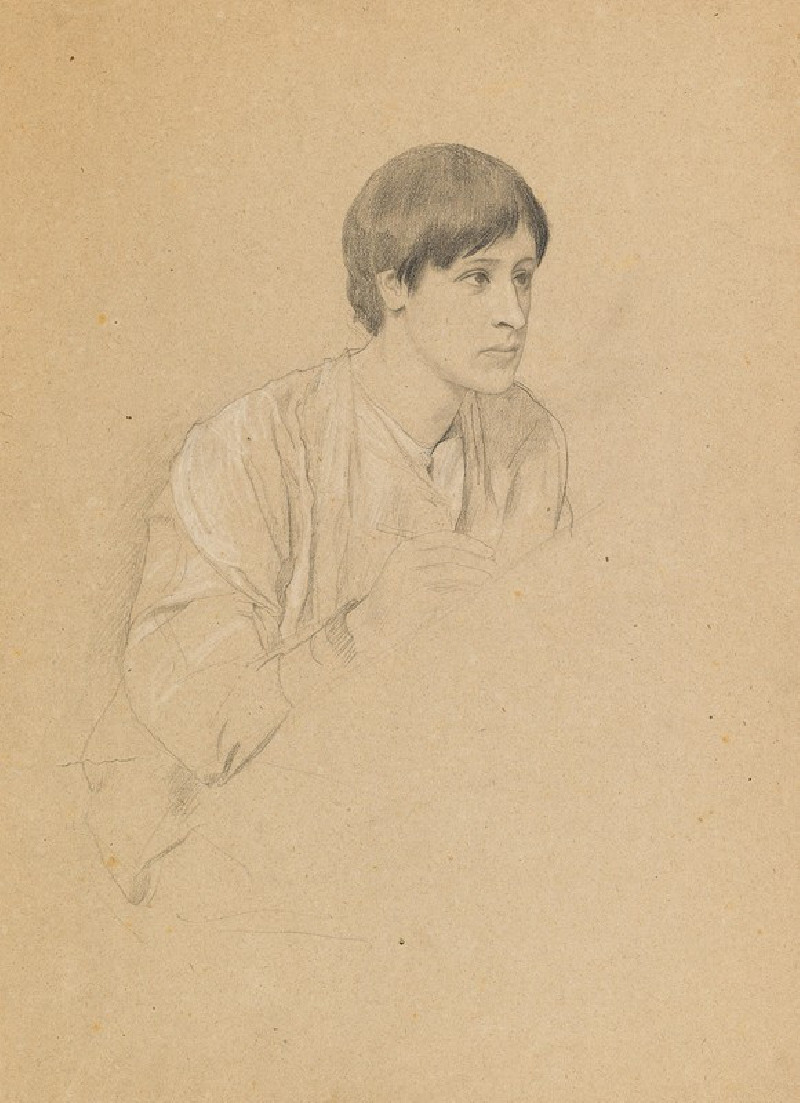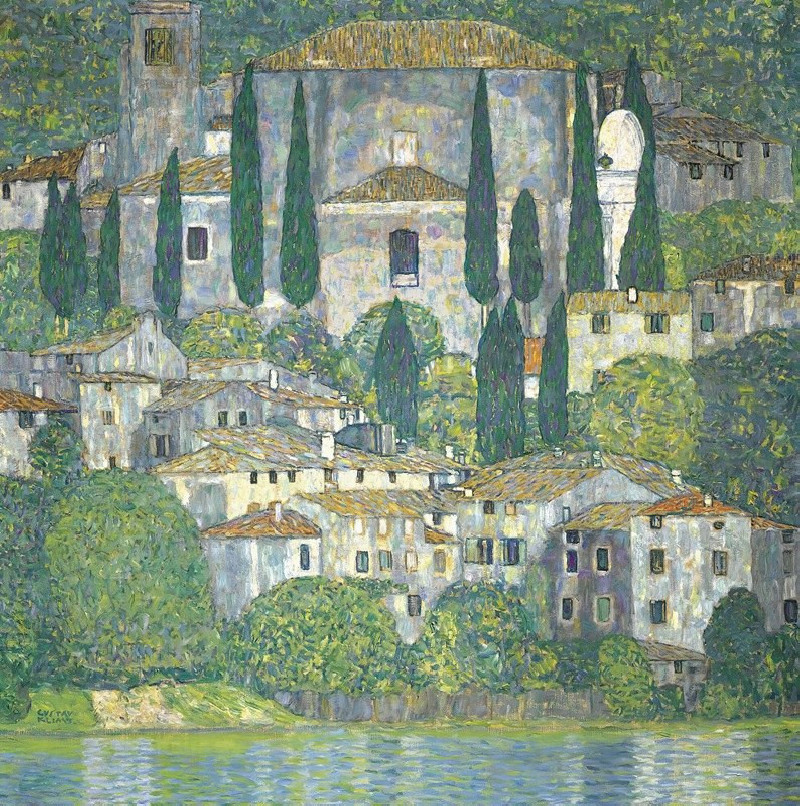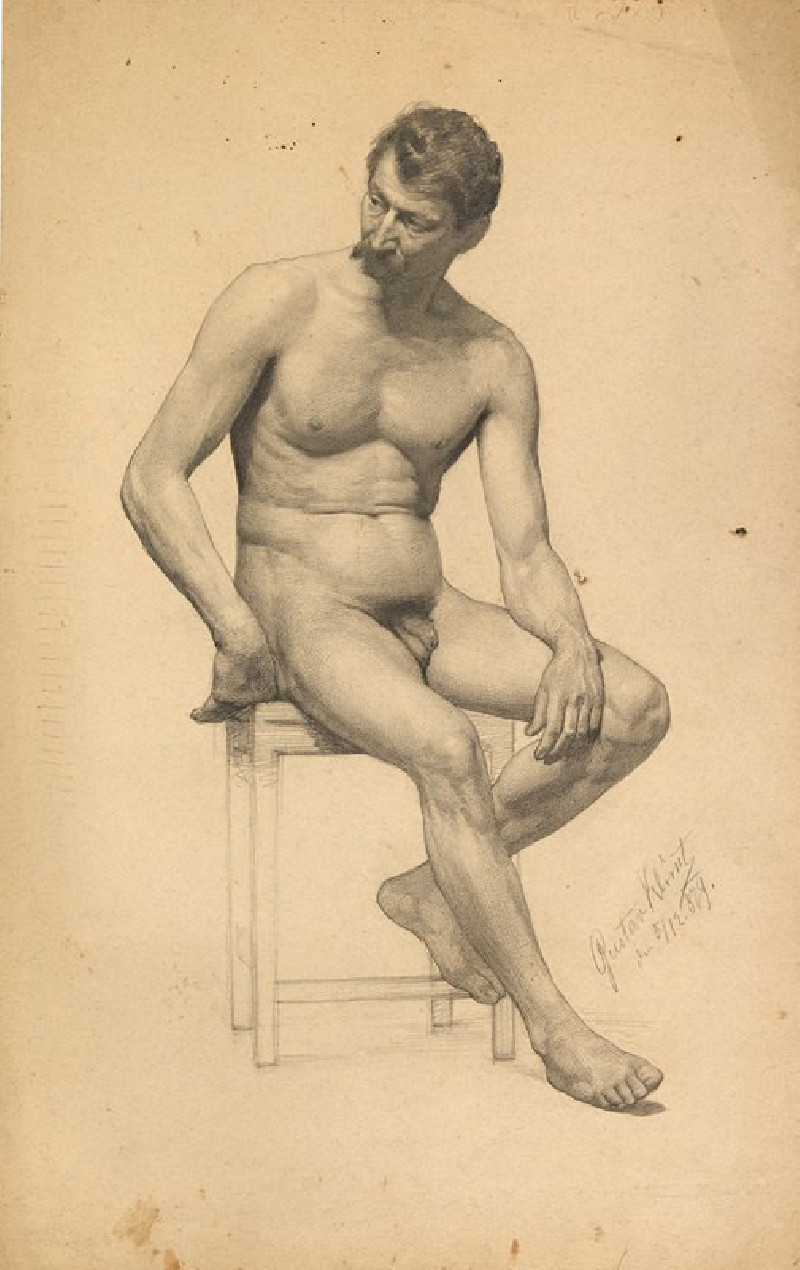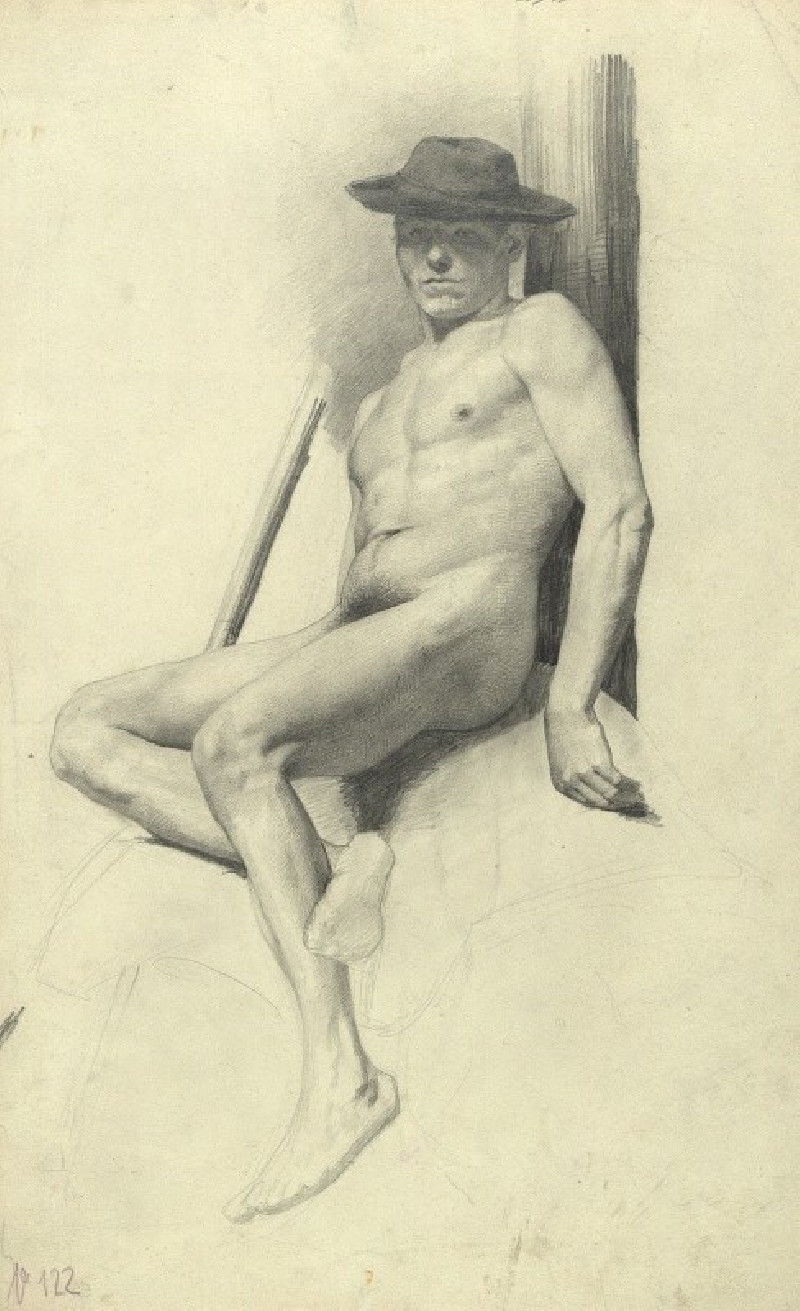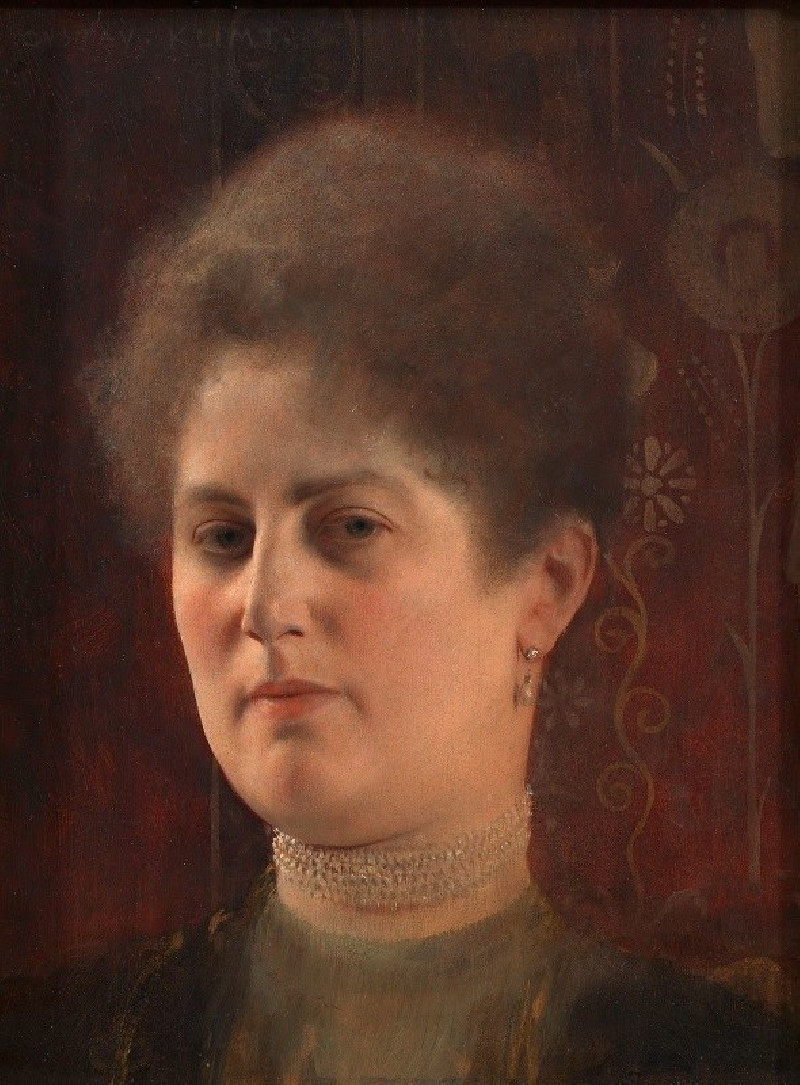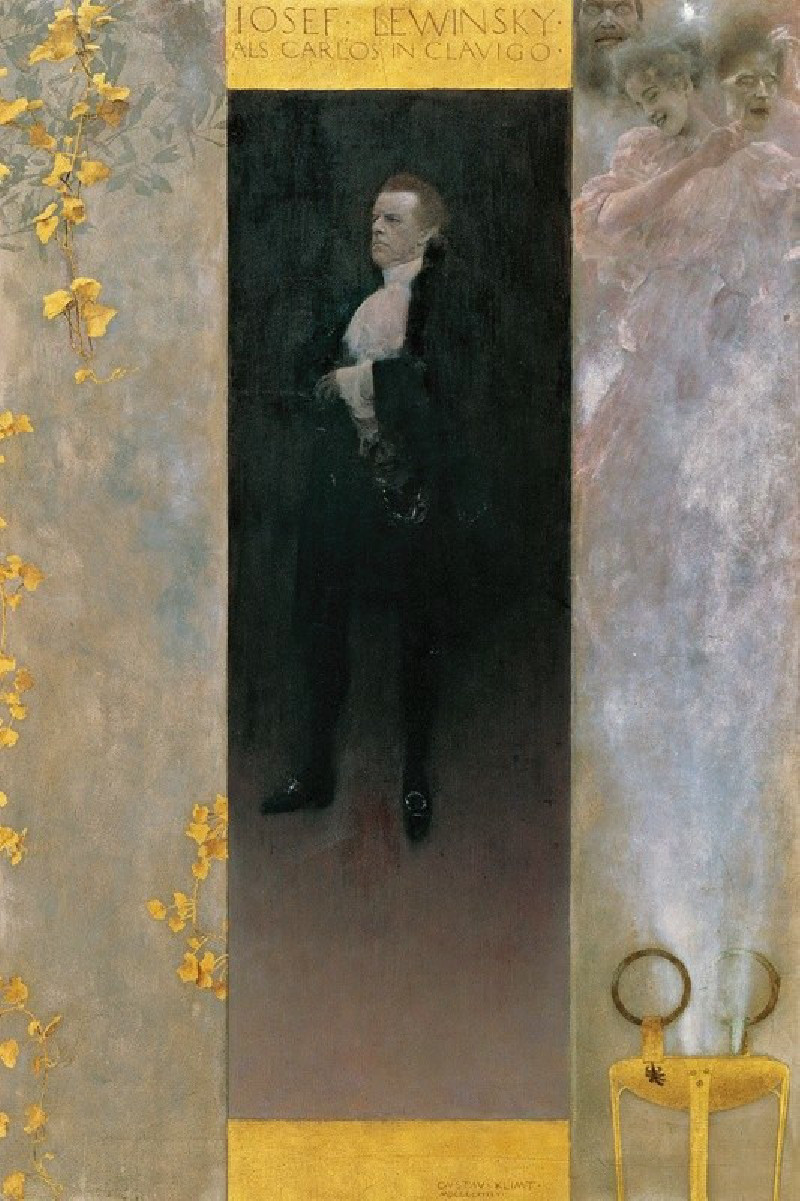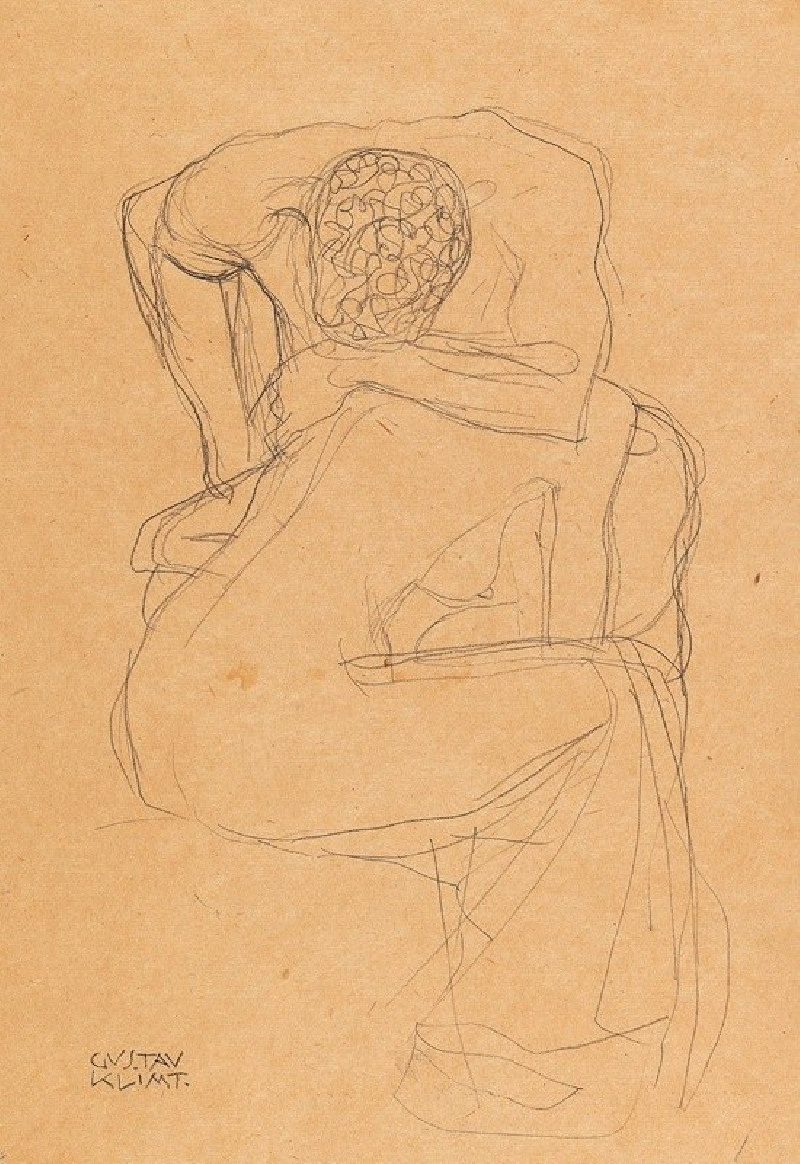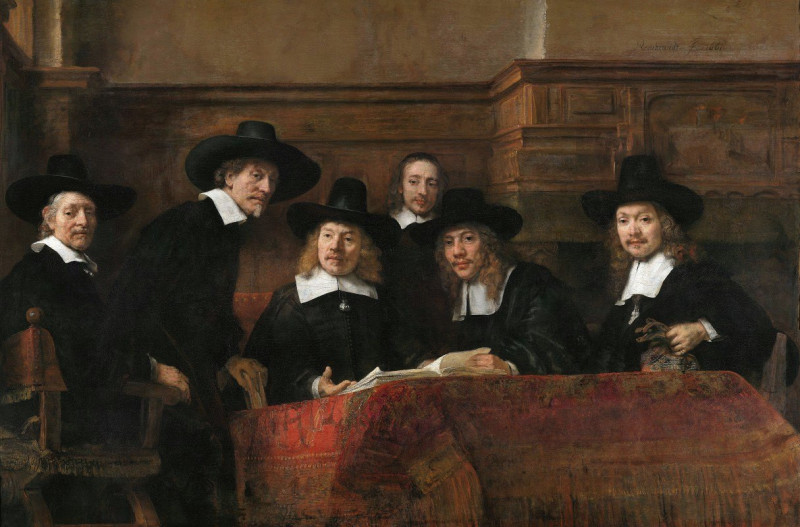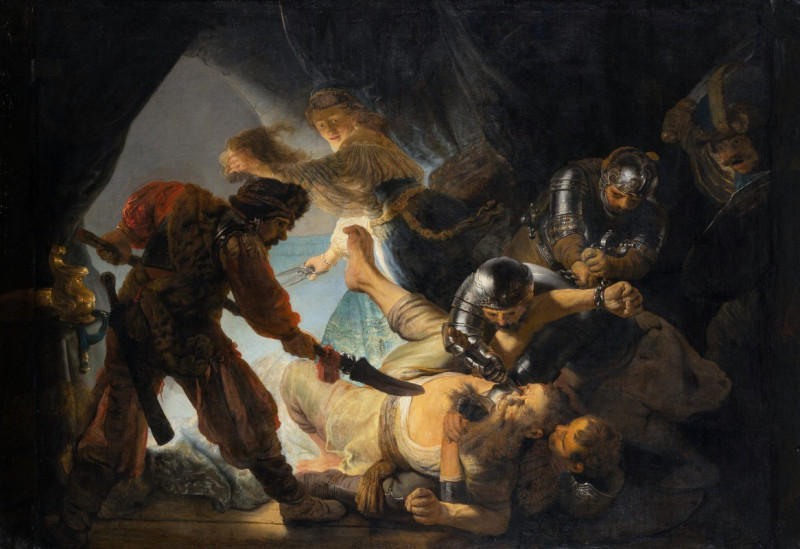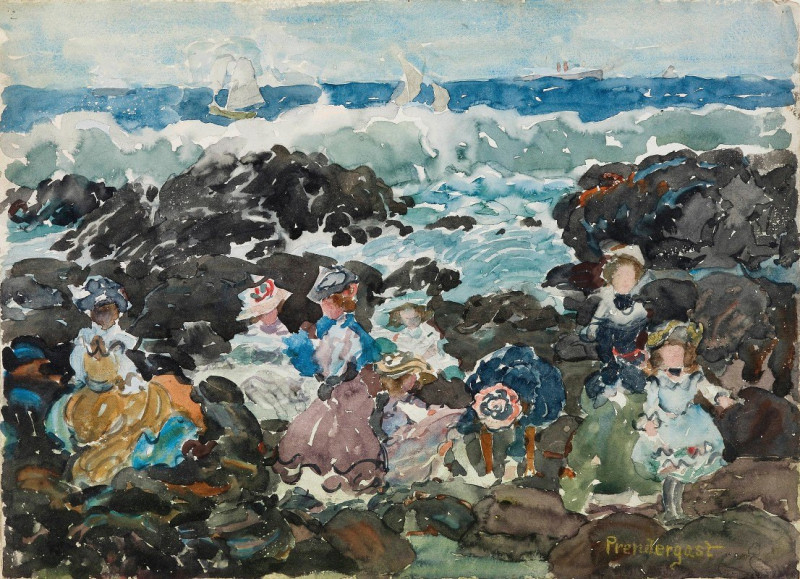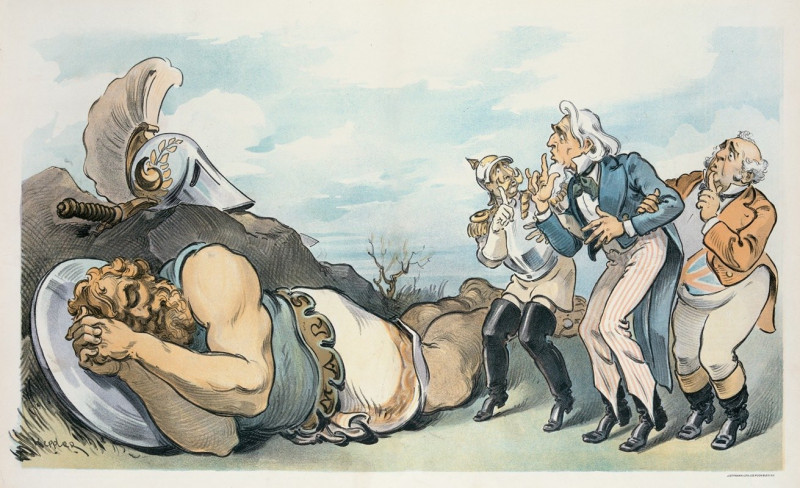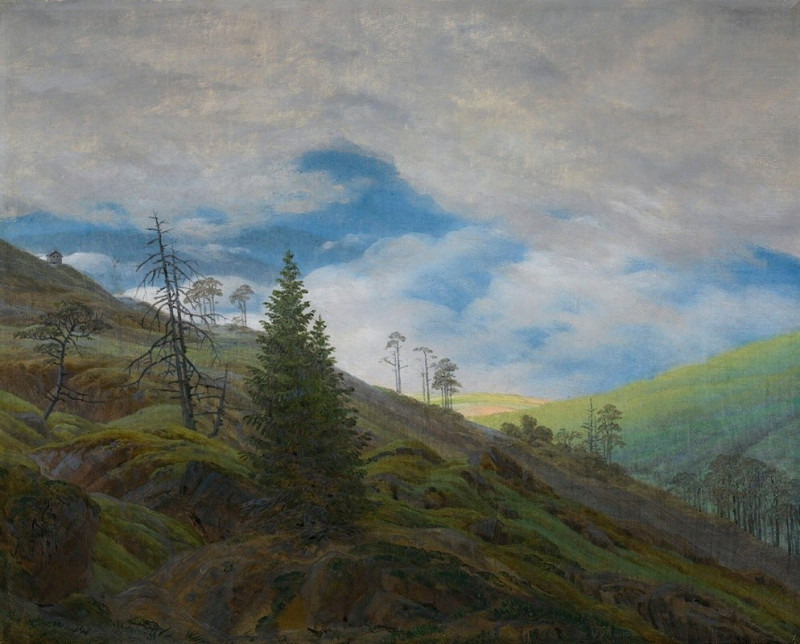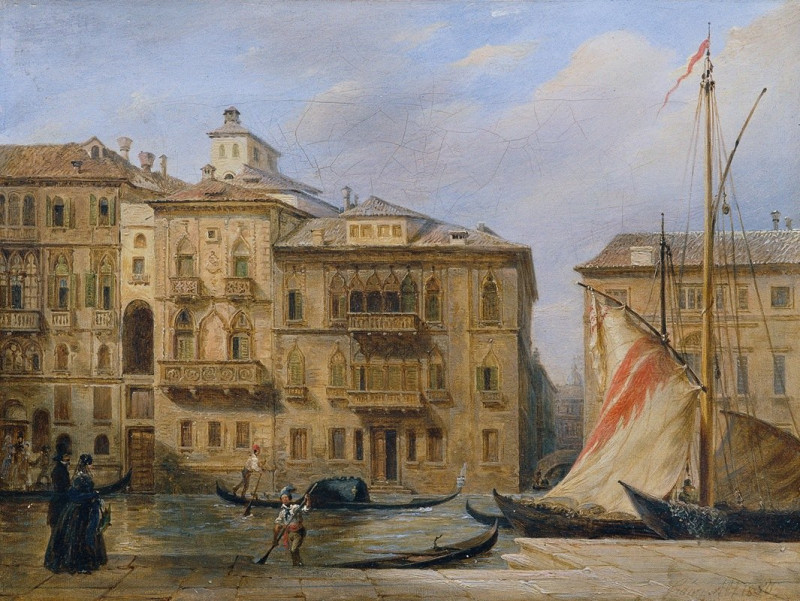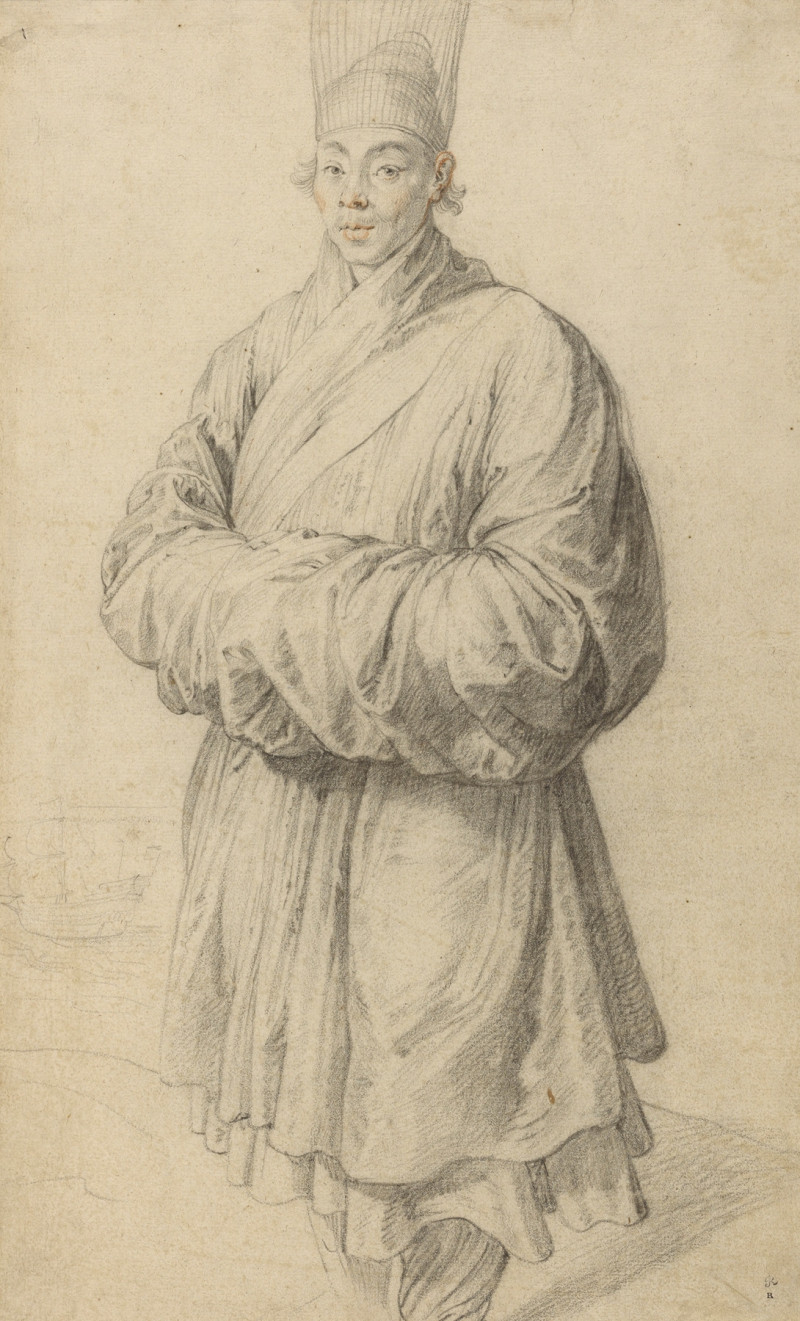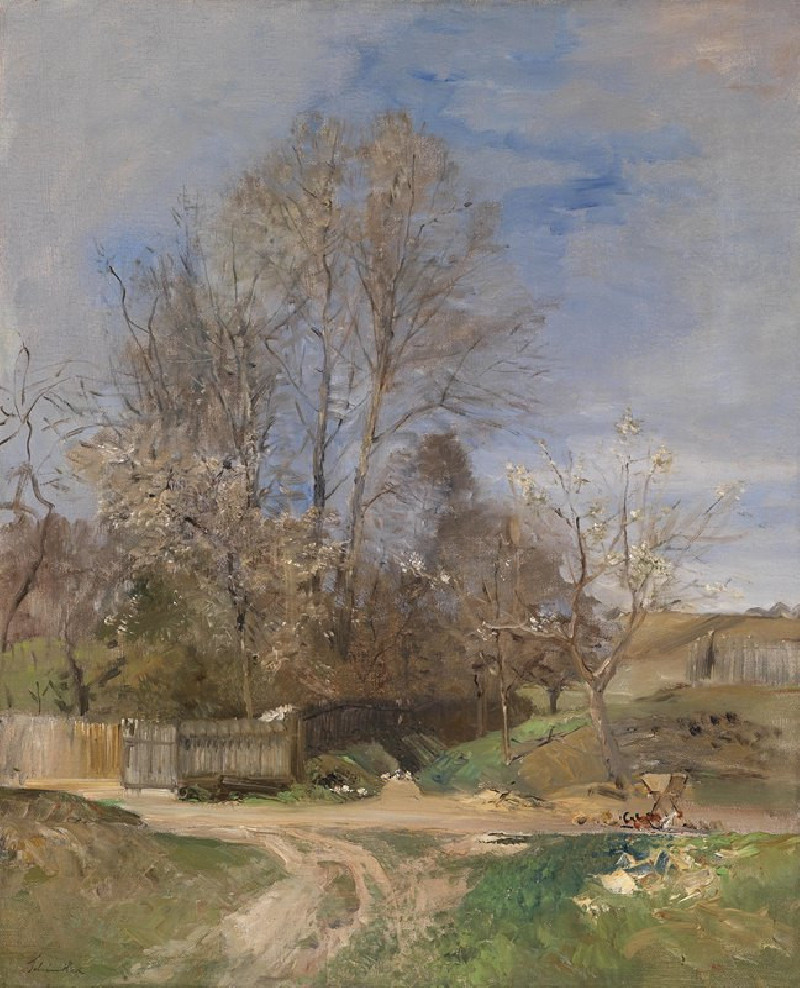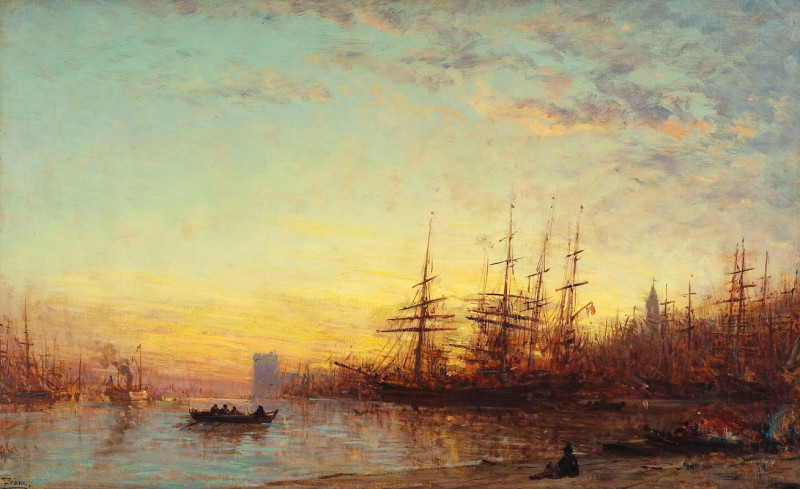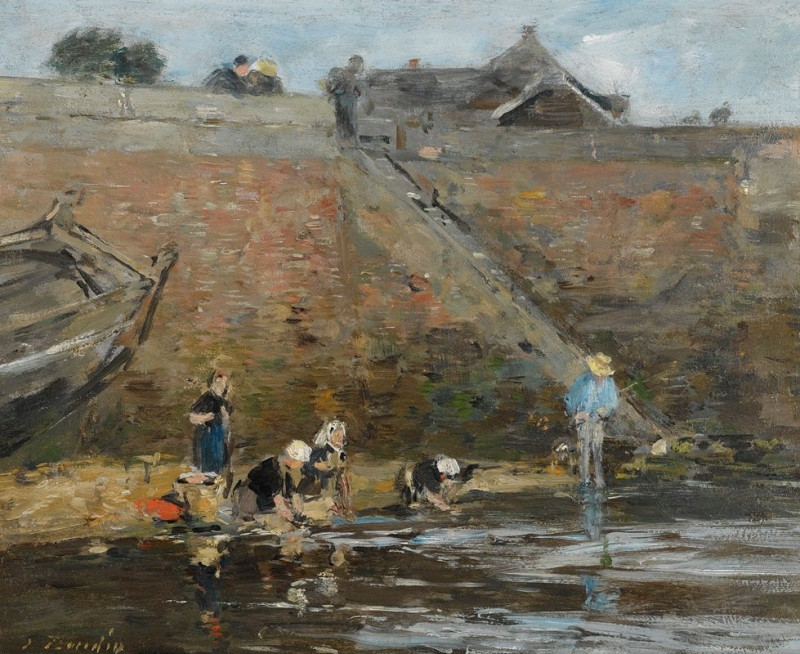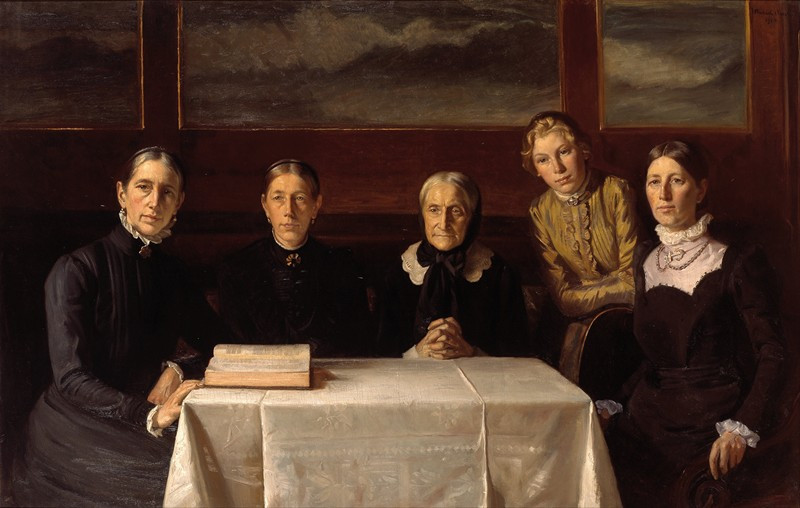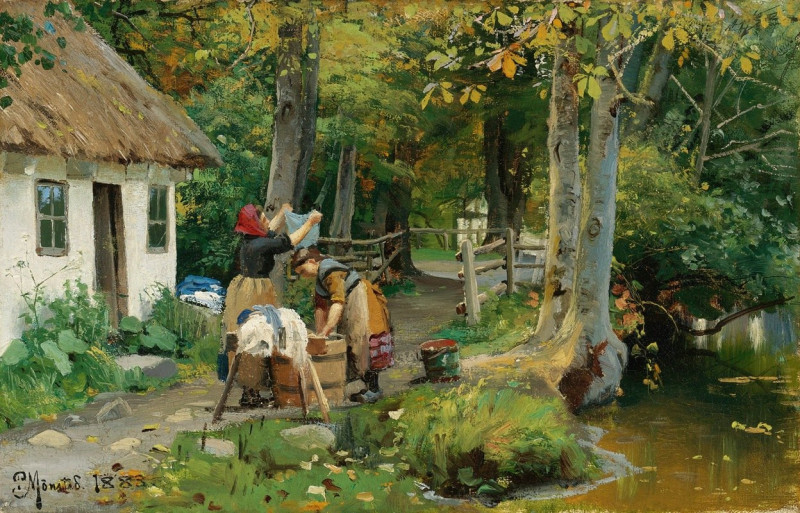Tragödie (1897)
Technique: Giclée quality print
Recommended by our customers
More about this artwork
"Tragödie," created by the renowned Austrian artist Gustav Klimt in 1897, stands as a captivating example of Klimt's early exploration into evocative themes and complex emotional expressions. This drawing, distinct from the vibrant gold leaf and ornate patterns Klimt is famously associated with in his later works, delves into the depths of human emotion and drama.The composition features two central figures enveloped in darkness, their faces illuminated in a manner that enhances the emotional intensity of the scene. The foreground is dominated by a woman in a dark dress, her gaze intense and direct, exuding an enigmatic aura of sorrow and dignity. Adjacent to her, in a stark contrast of expression, is a figure with a look of shock and despair, their open mouth and wide eyes encapsulating a moment of profound emotional distress.Surrounding these figures, Klimt intricately details a border filled with floral motifs and ethereal figures that seem to float, adding a layer of surrealism to the piece. These elements, typical of Klimt's love for decorative aesthetics, frame the central tragedy, perhaps suggesting the ever-present nature of beauty and transcendence, even within moments of profound sorrow."Tragödie" invites viewers to contemplate the complex interplay of beauty and sadness, demonstrating Klimt's masterful ability to convey deep emotional narratives through his art.
Delivery
Returns
Gustav Klimt (1862–1918) was one of the greatest Austrian symbolist painters of the Art Nouveau era. Renowned as one of the most prominent founding members, and as a president of the Vienna Art Nouveau movement (Vienna Secession). His works were mainly paintings, murals, and sketches. Marked by his numerous erotic drawings, Klimt's primary subject were female figures, and at one point his work was even criticized as pornographic. Klimt found financial success in his "Golden Phase" with decorative techniques and the prominent use of gold leaf in his paintings.

